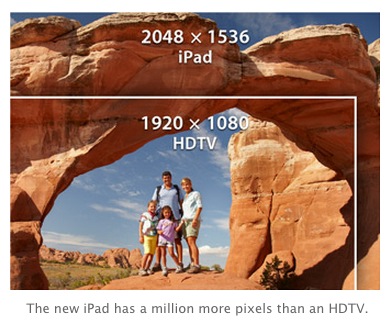Apple TV (whatever it ends up being called) will kill cable. It will also give TV new life in a new form.
 It won’t kill the cable companies, which will still carry data to your house, and which will still get a cut of the content action, somehow. But the division between cable content and other forms you pay for will be exposed for the arbitrary thing it is, in an interactive world defined by the protocols of the Internet, rather than by the protocols of television. It will also contain whatever deals Apple does for content distribution.
It won’t kill the cable companies, which will still carry data to your house, and which will still get a cut of the content action, somehow. But the division between cable content and other forms you pay for will be exposed for the arbitrary thing it is, in an interactive world defined by the protocols of the Internet, rather than by the protocols of television. It will also contain whatever deals Apple does for content distribution.
These deals will be motivated by a shared sense that Something Must Be Done, and by knowing that Apple will make TV look and work better than anybody else ever could. The carriers have seen this movie before, and they’d rather have a part in it than outside of it. For a view of the latter, witness the fallen giants called Sony and Nokia. (A friend who worked with the latter called them “a tree laying on the ground,” adding “They put out leaves every year. But that doesn’t mean they’re standing up.”)
I don’t know anything about Apple’s plans. But I know a lot about Apple, as do most of us. Here are the operative facts as they now stand (or at least as I see them):
- Apple likes to blow up categories that are stuck. They did it with PCs, laptops, printers, mp3 players, smartphones, music distribution and retailing. To name a few.
- TV display today is stuck in 1993. That’s when the ATSC (which defined HDTV standards) settled on the 16:9 format, with 1080 pixels (then called “lines”) of vertical resolution, and with picture clarity and sound quality contained within the data carrying capacity of a TV channel 6MHz wide. This is why all “Full HD” screens remain stuck at 1080 pixels high, no matter how physically large those screens might be. It’s also why more and more stand-alone computer screens are now 1920 x 1080. They’re made for TV. Would Steve Jobs settle for that? No way.
- Want a window into the future where Apple makes a TV screen that’s prettier than all others sold? Look no farther than what Apple says about the new iPad‘s resolution:

- Cable, satellite and over-the-air channels are still stuck at 6MHz of bandwidth (in the original spectrum-based meaning of that word). They’re also stuck with a need to maximize the number of channels within a finite overall bandwidth. This has resulted in lowered image quality on most channels, even though the images are still, technically, “HD”. That’s another limitation that surely vexed Steve.
- The TV set makers (Sony, Visio, Samsung, Panasonic, all of them) have made operating a simple thing woefully complicated, with controls (especially remotes) that defy comprehension. The set-top-box makers have all been nearly as bad for the duration. Same goes for the makers of VCR, DVD, PVR and other media players. Home audio-video system makers too. It’s a freaking mess, and has been since the ’80s.
- Steve at AllThingsD on 2 June 2010: “The only way that’s ever going to change is if you can really go back to square one and tear up the set-top-box and redesign it from scratch with a consistent UI, withall these different functions, and get it to the consumer in a way they are willing to pay for. We decided, what product do you want most? A better tv or a better phone? A better TV or a tablet? … The TV will lose until there is a viable go-to-market strategy. That’s the fundamental problem.” He also called Apple TV (as it then stood) a “hobby”, for that reason. But Apple is bigger now, and has far more market reach and clout. In some categories it’s nearly a monopoly already, with at least as much leverage as Microsoft ever had. And you know that Apple hasn’t been idle here.
- Steve Jobs was the largest stockholder in Disney. He’s gone, but the leverage isn’t. Disney owns ABC and ESPN.
- The main thing that keeps cable in charge of TV content is not the carriers, but ESPN, which represents up to 40% of your cable bill, whether you like sports or not. ESPN isn’t going to bypass cable — they’ve got that distribution system locked in, and vice versa. The whole pro sports system, right down to those overpaid athletes in baseball and the NBA, depend on TV revenues, which in turn rest on advertising to eyeballs over a system made to hold those eyeballs still in real time. “There are a lot of entrenched interests,” says Peter Kafka in this On the Media segment. The only thing that will de-entrench them is serious leverage from somebody who can make go-to-market, UI, quality, and money-flow work. Can Apple do that without Steve? Maybe not. But it’s still the way to bet.
Cable folks have a term for video distribution on the net Net. They call it “over the top“. Of them, that is, and their old piped content system.
That’s actually what many — perhaps most — viewers would prefer: an à la carte choice of “content” (as we have now all come to say). Clearly the end state is one in which you’ll pay for some stuff while other stuff is free. Some of it will be live, and some of it recorded. That much won’t be different. The cable companies will also still make money for keeping you plugged in. That is, you’ll pay for data in any case. You’ll just pay more for some content. Much of that content will be what we now pay for on cable: HBO, ESPN and the rest. We’ll just do away with the whole bottom/top thing because there will be no need for a bottom other than a pipe to carry the content. We might still call some sources “channels”; and surfing through those might still have a TV-like UI. But only if Apple decides to stick with the convention. Which they won’t, if they come up with a better way to organize things, and make selections easy to make and pay for.
This is why the non-persuasiveness of Take My Money, HBO doesn’t matter. Not in the long run. The ghost of Steve is out there, waiting. You’ll be watching TV his way. Count on it.
We’ll still call it TV, because we’ll still have big screens by that name in our living rooms. But what we watch and listen to won’t be contained by standards set in 1993, or by carriers and other “stakeholders” who never could think outside the box.
Of course, I could be wrong. But no more wrong than the system we have now.
Leave a Reply